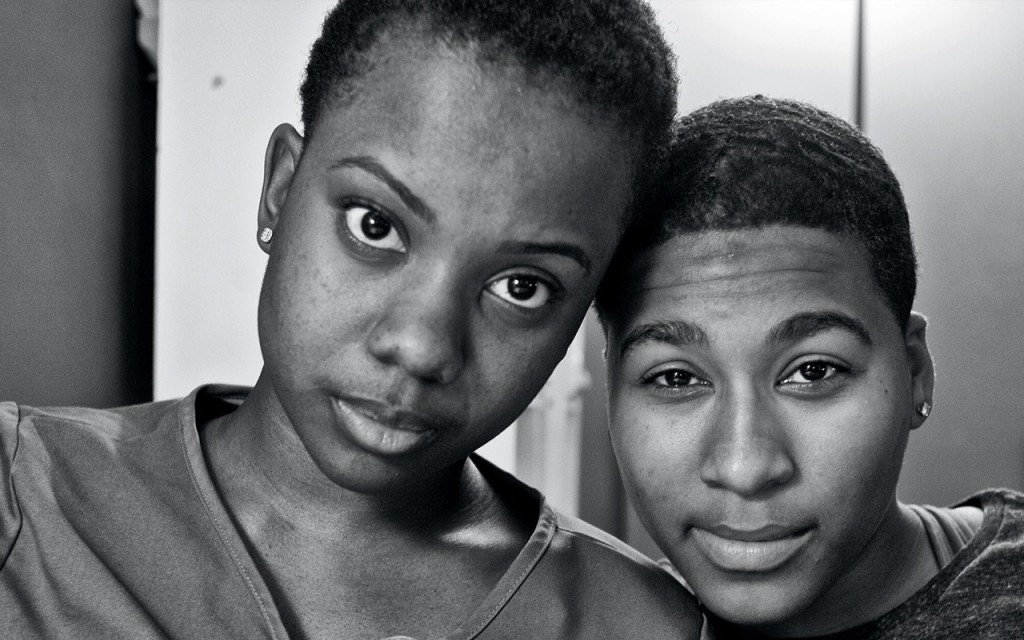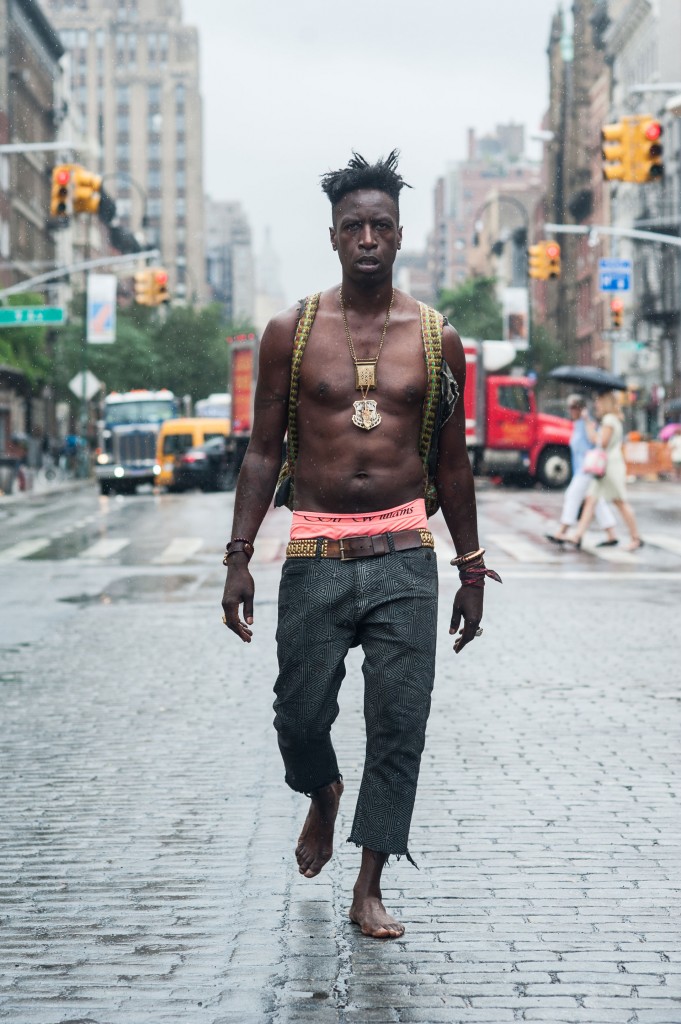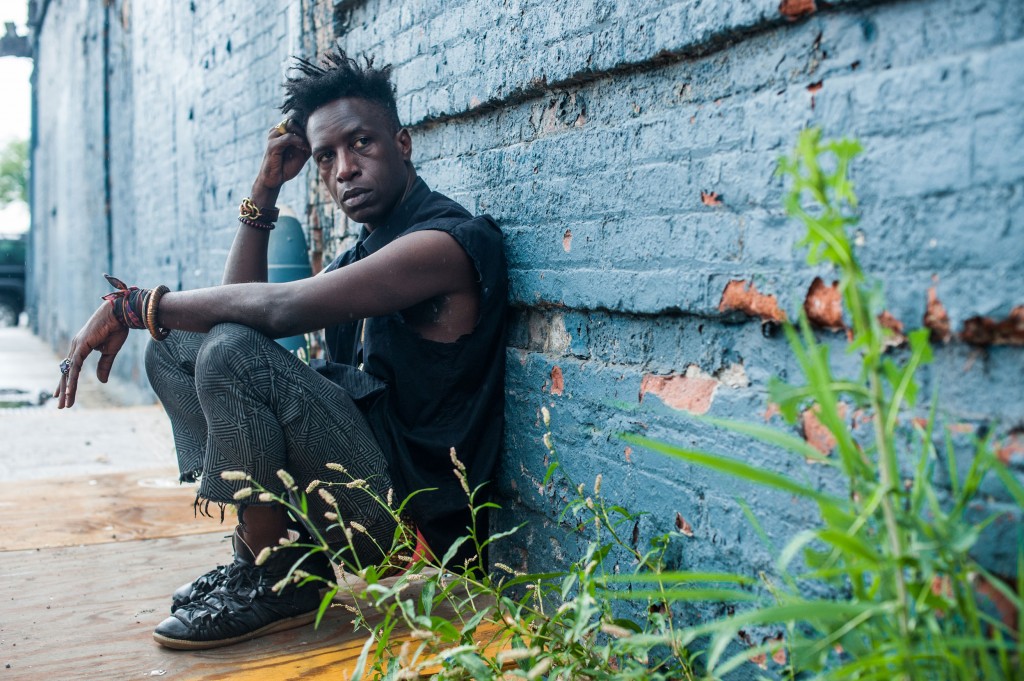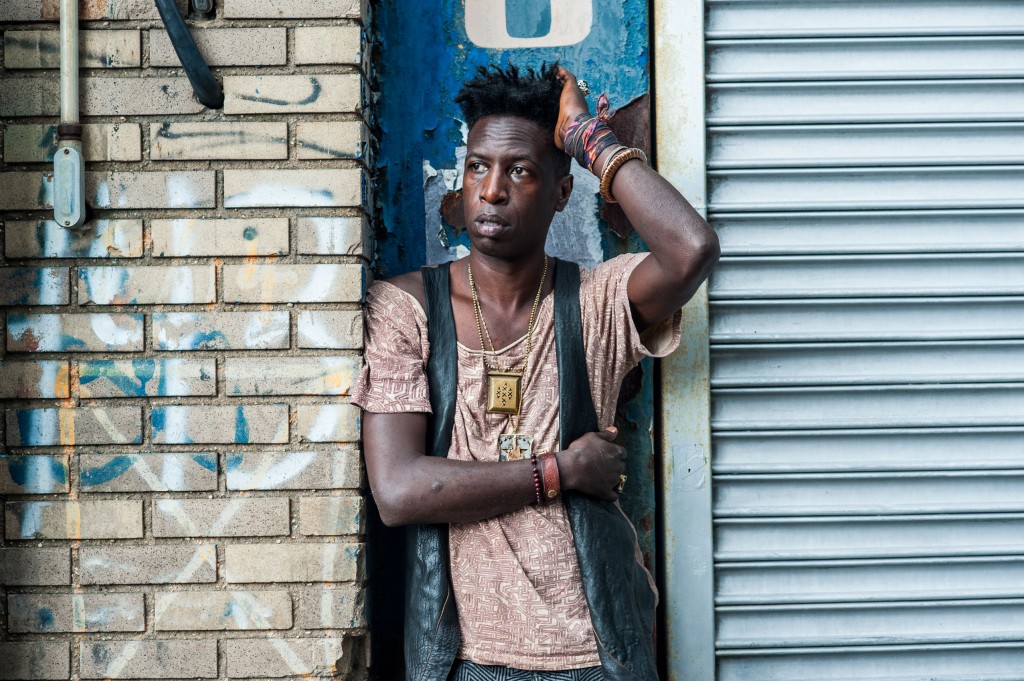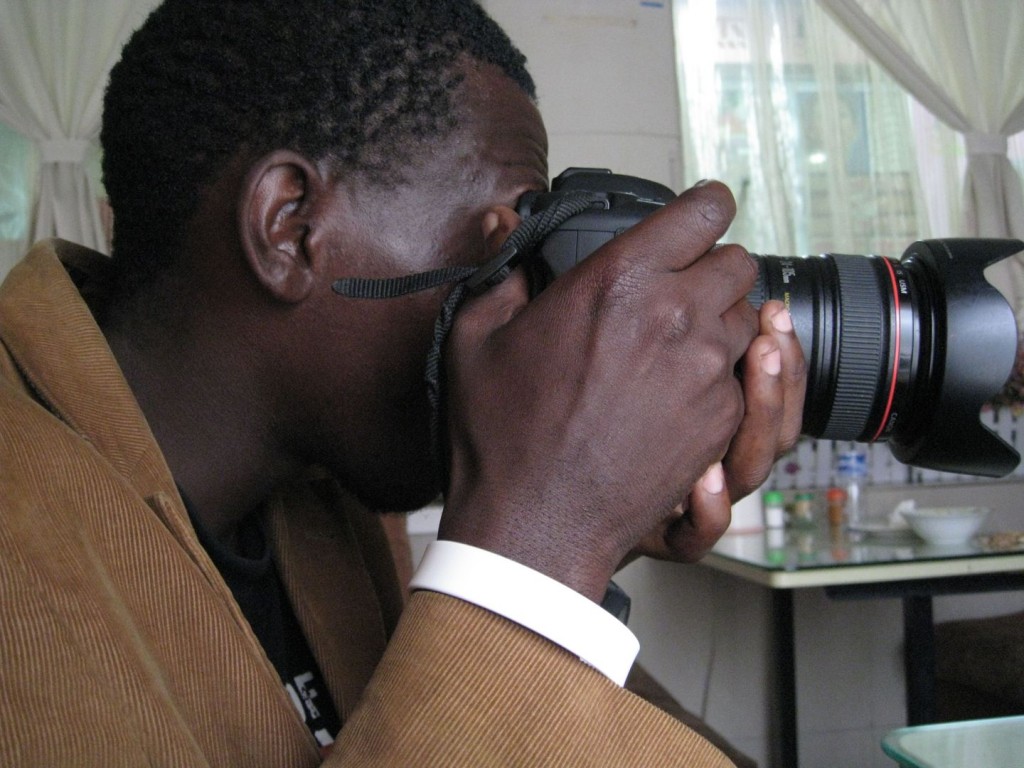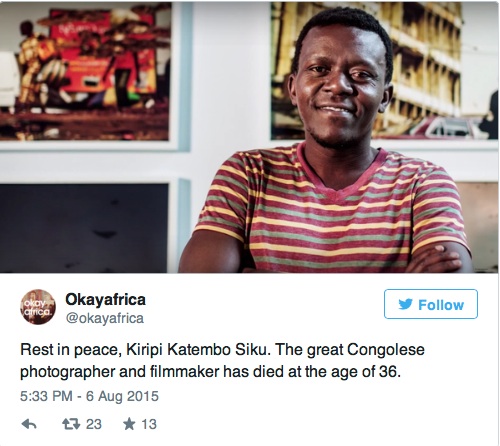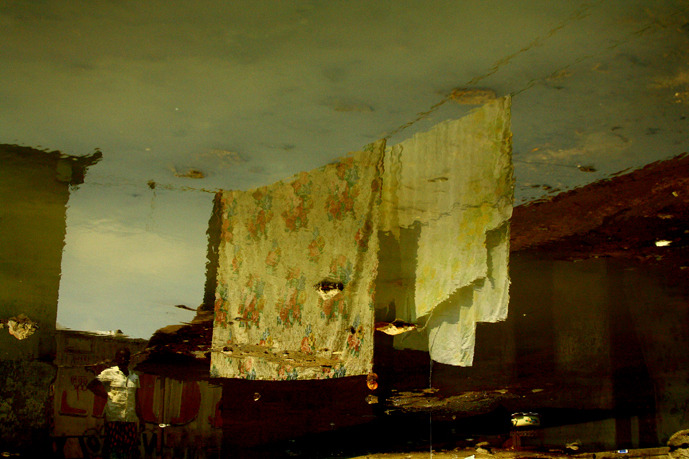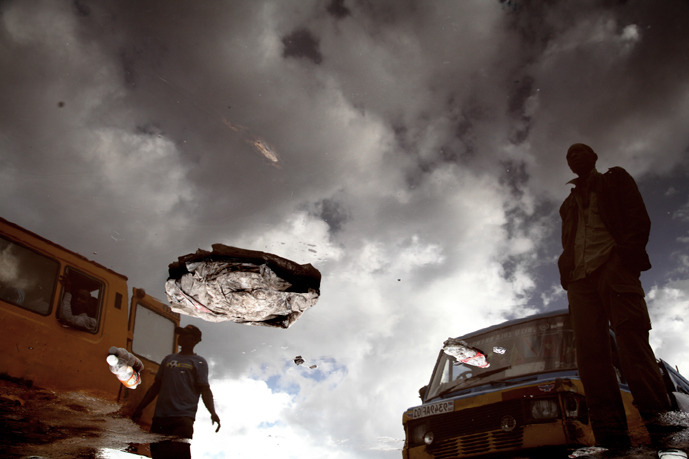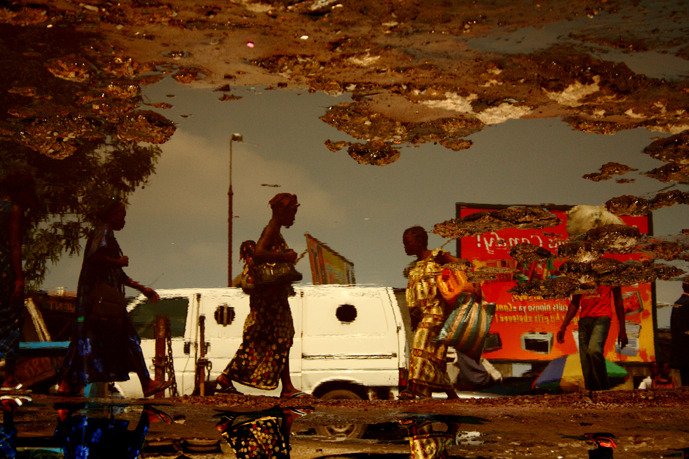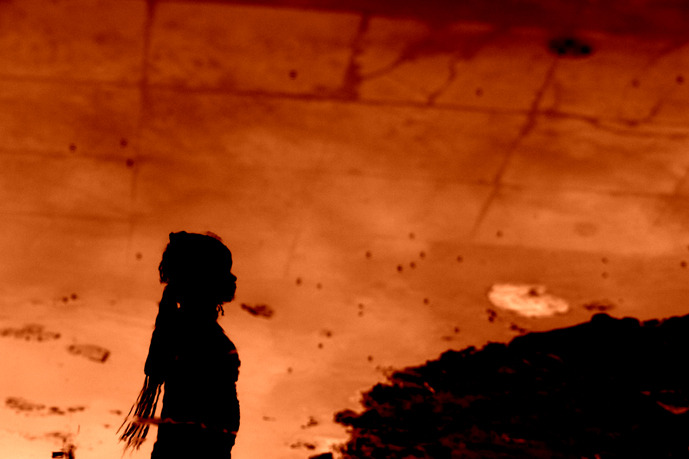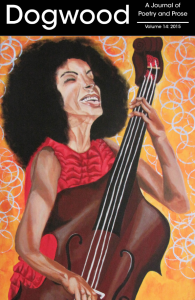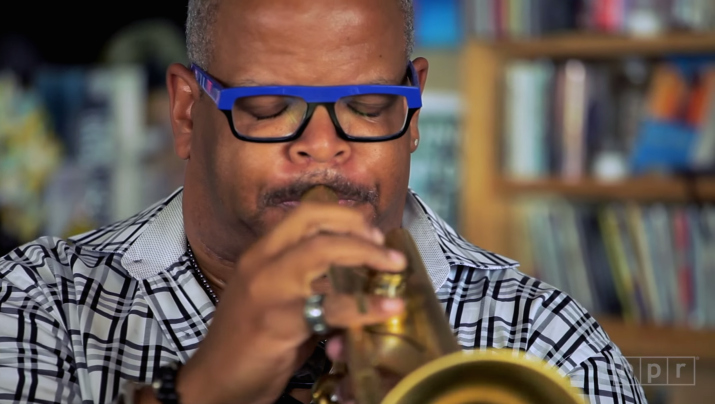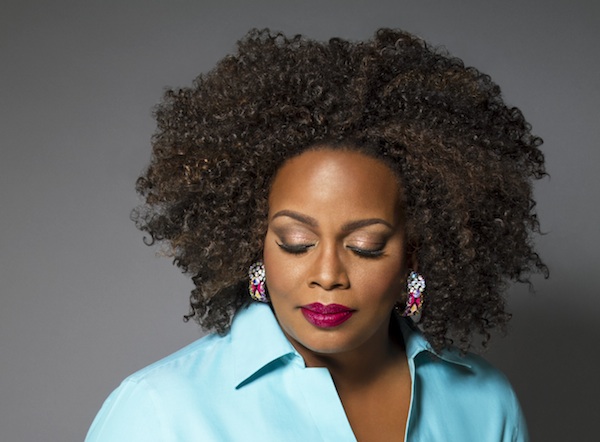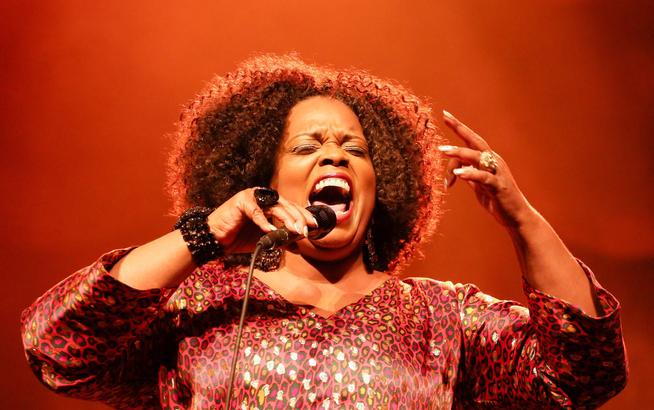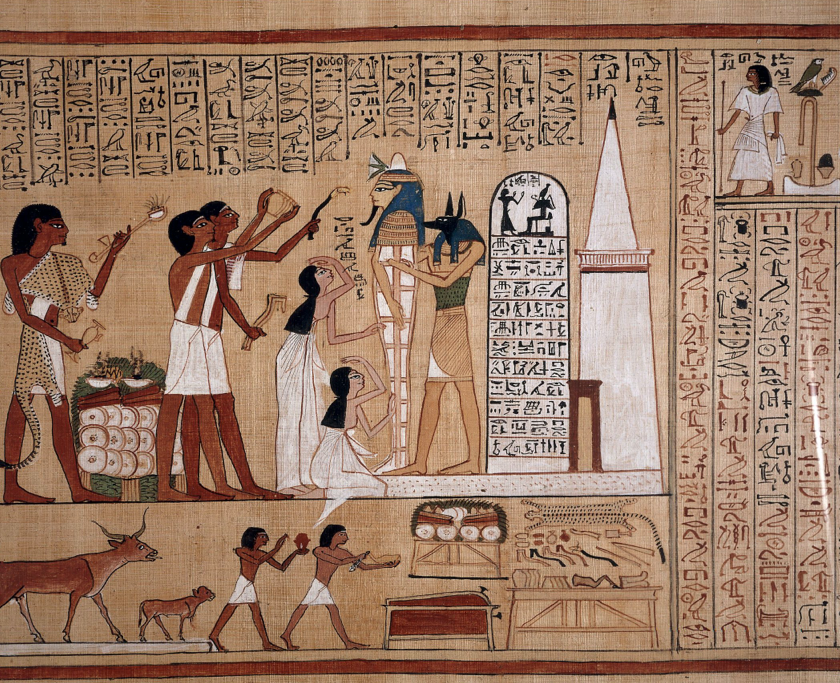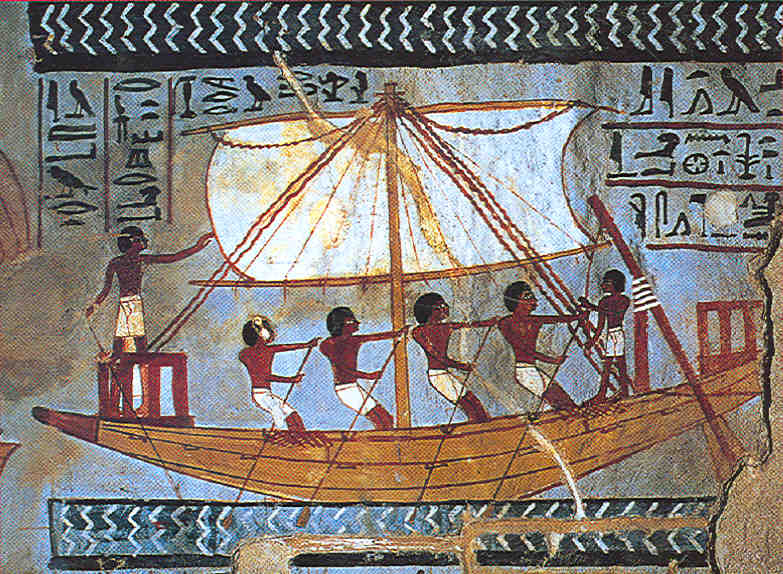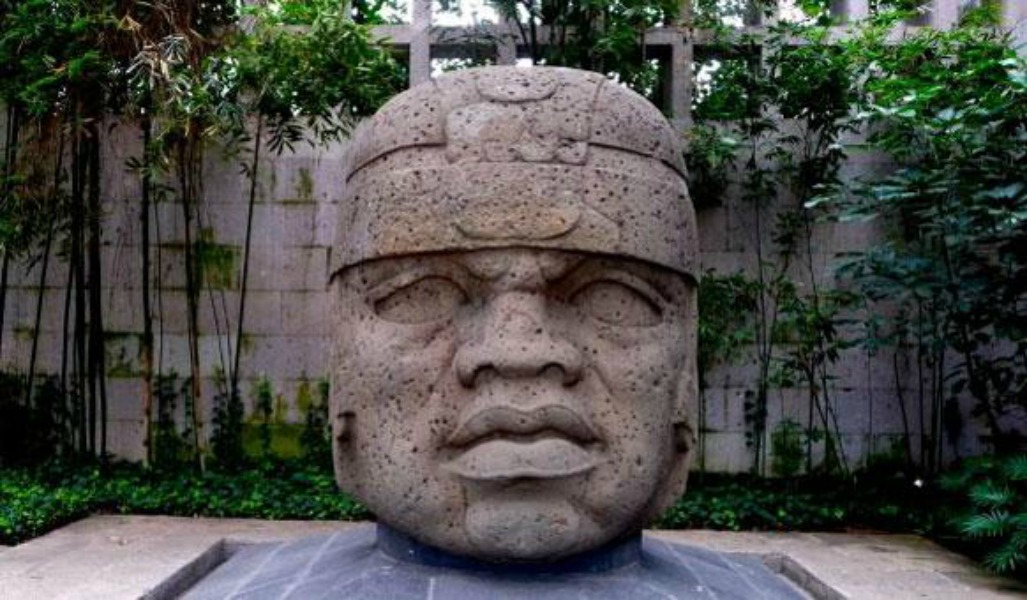[FERGUSON FORWARD]
Brittany and Alexis:
In Love and Struggle
The co-founders of Millennial Activists United
on finding forever on West Florrisant Avenue,
and keeping the movement going
It takes little more than a cursory glance at St. Louis-natives Brittany Ferrell and Alexis Templeton to recognize that they may be one of the most head-over-heels-in-love couples you’ve ever seen. And you probably wouldn’t assume from that quick peek that the sweet faced young twenty-somethings have emerged as two of the baddest, boldest activists to emerge from the movement we call #Ferguson. The co-founders of Millennial Activists United (along with Ashley Yates, who has since left the group to organize in Oakland) were a critical part of the early protests and also made it very clear that women would not take a backseat or secondary role in this new movement.
Here, the newlyweds talk about what brought them to the streets when Mike Brown was killed and finding love in a hopeful place.
EBONY: So tell me how you two first met?
Brittany Ferrell: We met on West Florissant Avenue in August, when QuikTrip was still ‘Ground Zero.’ We met just as strangers that took to the streets. We were protestors that didn’t know one another. Our relationship cultivated from there.
AT: She couldn’t resist me! I was cool. She couldn’t resist. Had to stand next to me on the front lines, every day.
BF: That’s not how it happened!
AT: That is how it happened. It is! [Laughs]
EBONY: At what point did it become romantic?
BF: When she started following me around.
AT: [Laughs loudly]
BF: It was a group of us that just kept hanging around one another. It was like 9 of us. As people went back to their homes and tried to go back to their daily lives, there was a certain group of us that were inseparable.
AT: That’s how [Millennial Activists United] started.
BF: Yeah. That’s how MAU started. So we started MAU and AT and I just spent a lot of time…
AT: People started drifting off, right? So then it was just me, Brittany, and Ashley.
BF: And Larry [Fellows]
AT: Now, Larry got his job [with Amnesty International, in New York City] and he’s doing his thing…we started getting close right when Larry left. We started hanging out, kickin it. She would always wanna get in my car. I would wait for her to get out of class. We actually went to the same school. I would wait for her to get out of class. I would try to stay at work longer.
BF: We found out we went to the same school in Ferguson when we were on…
AT: On the PD Lot! She was like “Oh, you go to UMSL!”…She gave me a hug. And ever since then, we just got really close.
BF: It started off more so as a support system. Because she was still battling with the accident. And I saw her struggling with that. Being someone that’s in healthcare, you recognize that depression.
EBONY: What was the accident?
AT: On July 6th 2013, I was in a car accident. I lost my dad. I lost my ex-fiancée. I lost my uncle. Everybody [in the car] died except me. I was the only one who made it. I went through a lot of depression. A lot of suicide attempts. A lot of suicidal tendencies. And then, one day I set foot in Ferguson and it gave me purpose to not kill myself. Literally an hour before I went out on the ground, I was about to kill myself. I went outside and then I came back in and I didn’t wanna die no more.
Then that started to fade. That passion started to fade. It was like a momentary Band-Aid. The trauma and the teargas and the rubber bullets and all of that, and the protests and the chanting, it all became normal. So then I meet her, you know what I’m sayin’? She completely made my life go 360 [degrees.] I woke up one morning and I just didn’t think about killing myself. I didn’t think about how I was gonna make it through the day.
That’s when I was like “I gotta marry this girl!”
EBONY: So once your story came out about you all meeting in the middle of the struggle and falling in love and getting married, did you find that the local LGBT community got a little bit more engaged in what was happening?
BF: It varied. Because, I noticed from a lot a gay White men, we still don’t hear from them. We still don’t see them. But from a lot of other people of color who identify as LGBTQ, and a good amount of White women that identify as LGBTQ, that they have really supported us. They’ve supported us in a different way than they supported us before the engagement. But the LGBT community still has a lot of work to do, especially here.
AT: I think our engagement sparked a lot of conversation whether it was wanted or not. It definitely started a lot of conversation here and across the nation. But definitely here people had there comments and that led to commentary about intersectionality.
BF: People did not realize that in this Black liberation movement, it is about Black folks. When the engagement happened, you had folks that wanted to express their concerns about the gayness distracting from the movement. And it gave people the opportunity to lay their viewpoints on the table. Do you really think it’s not about gay Black lives? …It created a lot of teachable moments for people. A lot of people were so stuck on the fact that this was a Black man issue. Few months later, nah, it’s all Black people. It’s Black women. You gotta show up for Black women. You gotta show up for Black LGBTQ folks. You have to do that.
AT: They used to call me “Hoops” and they’d be like “But Hoops been out there everyday!” (laughs) “You cant remove Hoops from this. Her life matters, too.” Those confrontations would happen and it would be like okay there’s queer folks fighting out here for us, too. This is about them too. Some people got that. It was great for people to have the growth and to see it’s not just about a straight Black man. It’s not just about me straight Black women. All of us are dying, regardless of how we identify. We’re all dying. We gotta lift their names up, too. So then when you go into certain spaces, people will lift up Mya Hall’s name. They’ll say Penny Proud, you know what I’m saying. Or the sister, Rakia Boyd. It changes. The names being lifted up has definitely changed from just men to inclusive of men, women, trans women, queers. Jessie Hernandez gets lifted up. I would say the engagement, not sparked it, but it helped just a little bit.
EBONY: Do you all want more children? [Brittany has a 7-year-old daughter from a previous relationship.]
BF: I do.
AT: We have a debate on who’s gonna carry it. Right? It’s on me right now. The ball is in my court and I’m just trying to give the ball back. (laughs). She ain’t having it! But we definitely want a kid…kids.
EBONY: Will you stay in St. Louis for good?
AT: We out.
EBONY: Where do you wanna go?
AT: California. Atlanta. Out the country…
BF: I don’t know. It’s just a lot has happened. I love this city because, for me, I’m just so deeply attached to it. Good and bad. But this city is also, and I’m sure this is everywhere for some people but I’m just so drained just from the energy of giving so much of yourself, even prior to August…it’s just been hard for me here. It has really been hard. I used to live in Jackson, Miss and I lived up north in St. Paul Minnesota, so when I think about St. Louis, I identify it as a very southern place. It has a very Southern-type mentality. Everybody is pretty content and pretty slow with the things that they do. Missouri is slow as a state. They’re the last to do everything. So it’s like I don’t know if St. Louis would be best for my vision because I need support. I need people around that are willing to support things. I mean even if they don’t agree, just supporting the cause.
EBONY: So what is MAU doing now? What’s your long term vision for the organization?
BF: We were just talking about getting some 501-3C status.
AT: We have new members.
BF: We do have new members.
EBONY: How many new members?
BF: Two. We wanna be able to come back and start doing work, established to where we can raise our own funding to do the work in the way that we wanna do it and not from an organization that’s suffering from the non-profit industrialization complex. I don’t want people to dictate what we do for the dollar. I want to be able to do what we do passionately without having to request or seek some type of approval for things that we choose to do. I think as an organization that’s led by queer Black women that advocate very strongly for Black women and queer folks and young people and Black lives, in general, I think we should have the right to be able to make those type of decisions without having to consult with a predominantly White organization. I’m not comfortable with it. I never have been and moving forward, when we really start, like, when we get back into organizing and movement-building like we have been in the past, I want to be able to know that whatever we decide to do, we are in control of that.
AT: It’s also changed our lane. We had a lane, we just never really focused in on it. Our lane was women, Black women, queer folks, Black queer folks and Black young folks. We did not stay in that lane because there’s just so much going on to where it’s hard to not be reactionary here because there are people dying left and right…You had people who were like “Well, they focusing on women’s rights and they focusing on gay rights and we are focusing on police brutality and we all need to be focused on Black men because they the ones dying.” Like these are real conversations. Like why can’t we do all of that and work towards a center goal of Black liberation, because that’s what “Black Lives Matter” encompasses and what it should encompass.
I appreciate folks like DeRay [McKesson] who stays in his lane and does his thing online for wetheprotestors.org and collects all that data and people don’t know that when you’re having these arguments with whomever you’re using his statistics to help combat your argument. So that’s helping the movement. Shout out to Hands Up United. They started their tech program for the youth.
BF: That’s huge.
AT: That’s huge! And people see that as them not doing nothing. Man, that’s amazing to have that! That’s solidarity all day there. I love it. And you’re giving people computers and you’re helping people get jobs? That’s incredible.
BF: Shout out to the clergy doing “Truth and Reconciliation.”
AT: Yes! Shout out to the clergy doing Truth and Reconciliation! Shout out to the Ferguson Commission, folks like Brittany Packnett, folks like Reverend Starksy Wilson, who are talking to the, if you will, “respectable Negroes,” who come to those meetings. You have people like them, who are there, and Tracy Blackmon, who are there, who are very woke and are very “non-respectable” or they can be respectable but they’ll take the respectable out real quick for you and get you together, you know what I’m sayin, in a very loving way. And we have got a lot of voices who will get out there and will take to the streets and…
BF: Turn up in the most uncouth way and don’t care.
AT: And it don’t matter. They’re unapologetically Black and they’re unapologetically them and we need all of that. It all works together. I think it’s dope and nobody sees how organized that looks on the inside because we’re all tryna keep it together, but on the outside it looks incredibly organized in St. Louis. We’re really doing the damn thing. I think a lot of people here, in the movement, have to take a step back and see that. I think it’s great what everybody is doing.
EBONY: If you could speak to Mike Brown right now, what would you tell him?
AT: I don’t know. It’s almost selfish to be face to face with dude and talk about yourself and be like “Thank you for all of this growth.” But I’d I probably wouldn’t even say anything. I ‘d just be like “Yo, let’s just ride out.” Just ride through time and show him days before August 9th and how sleep as a Black community we were, how respectable and not radical at all and very apologetic. Now we’re just not. Just take him through that and show him the growth that he’s caused thousands and thousands and thousands of people across this country. They talk about this in Singapore. Just take him all across the world and show him and just not say anything. I’d let him take it all in for himself and let him do the talking. Just show him, “This is what you did. This is what you did in the last moments. This is exactly what you did.”
BF: I would affirm him. I would affirm his Blackness. I would affirm his existence. Not too many Black kids who were ever affirmed in life and it’s sad that it has to happen after such a tragedy like August 9th. I would affirm him and I would tell him that he matters and I would tell him that I appreciate and thank him for becoming a martyr for the Black community, not by choice, not by expectation, but by circumstance. I would tell him that I’m sorry that you can’t smell the flowers until it’s too late.



